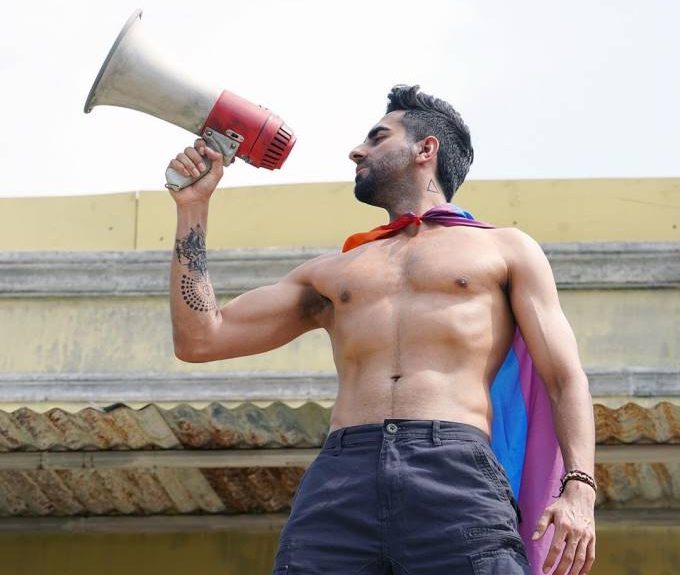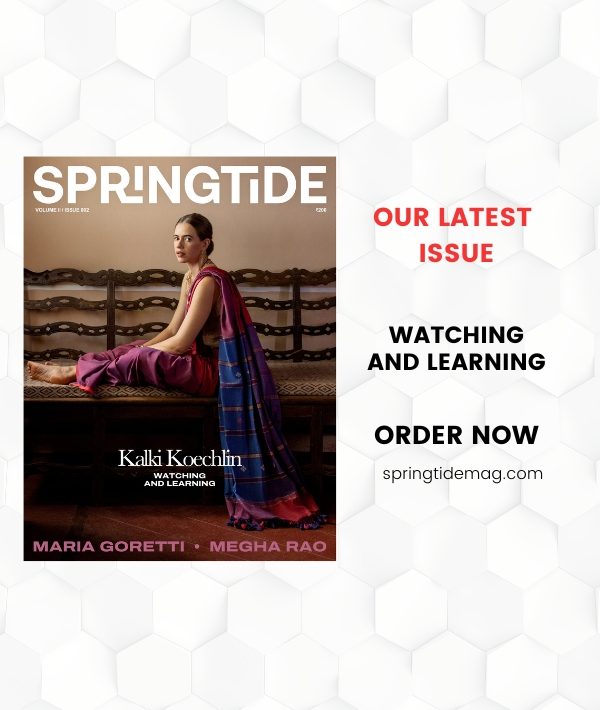It’s the dawn of the fifth pride month in a post-377 world, and queer representation in India’s pop culture has barely made any strides. We have seen scattered representation mainly in low-budget films like Margherita with a Straw and Aligarh, but for the most part – mainstream Bollywood has remained blissfully ignorant of its queer demographic.
The first-ever gay character seen in an Indian movie was an orange mohawk sporting Anupam Kher in Mast Kalander (1991). For the longest time after that, the only representation that queer characters got in mainstream Indian movies was for comic relief. The disastrous Karan-Johar production, Dostana (2008), a remake of an Adam Sandler film, starred big names in Bollywood and it gave the gays a bad rep in India in the mid-2000s. It more or less defined how the industry would portray queer characters on screen for the decade to come – if it would at all.
The last and only time Indian cinema portrayed authentic lesbian romance was in the highly controversial Fire (1998) – although not sure it counts because it’s an Indo-Canadian production – since then we have failed the lesbians, however, with majorly toxic portrayals of sapphic romance through films like Girlfriend (2014).
The mid-2010s signalled a better future for queer folks in Indian media, we saw more nuanced and respectful portrayals of gay characters like Fawad Khan in Kapoor and Sons (2016) and Madhuri Dixit-Huma Khureshi’s lesbian romance in Dedh Ishqiya (2014). It wasn’t a milestone achievement, but it was something.
Then, Ek ladki ko dekha toh aisa laga (2019), by a trans screenwriter was Bollywood’s first mainstream depiction of a lesbian relationship but was bogged down heavily by tokenism and bad storytelling. Many believed that the film did not offer enough space for the lesbian romance to flourish and instead focused too much on the heterosexual characters. “I know a lot of people hate the film because it honestly is a very shallow representation of a very complex topic – but it was how I introduced my parents to the idea that being gay is normal,” says Kimaya, 21. “Seeing their favourite actors like Anil Kapoor and Juhi Chawla on screen was the perfect way to normalize this and at the very least start a conversation”.
Post the historic 2018 verdict in which India decriminalized homosexuality, one hoped things would change – but most LGBTQ+-centric media since has been a major letdown. Streaming services have fared better but representation in theatre releases is very surface-level and borderline offensive. The cis-het-dominated industry is profiting off queer stories without giving much back to the community.
Speaking about the controversial 2021 film, Chandigarh Kare Ashiqui, Placid, 25, said, “That transphobic Ayushmann Khurrana film definitely set us back by ages – I personally thought we were on such a good track with films like Shubh Mangal Zyada Saavdhan and even Badhaii Do.” Chandigarh Kare Ashiqui starred Ayushmann Khurrana and Vaani Kapoor, a cis actress as a trans character which many deemed as an offensive portrayal of the transgender community. “But it does give me some hope that everyone rained down on the film so badly – a few years ago this would have been okay but people find this rightfully infuriating now. So perhaps, it’s a good sign,” concluded Placid.
With the rise in OTT content and audiences gaining exposure to international content – Bollywood has had to buck up in general. People won’t settle for horrible storytelling sold under the names of A-list actors anymore and it’s only a matter of time before that takes a toll on the industry. Throughout the decades, there have not been enough mainstream releases in Indian cinema that cared about telling an engaging story. What we need now more than anything is authentically queer filmmakers at the forefront, telling authentically queer stories. The craft is there in indie and OTT stories, but to bring them to the masses, production houses need to fund projects that deal with such taboo topics and hire queer filmmakers to do justice to the stories.






Warning: Use of undefined constant ‘url’ - assumed '‘url’' (this will throw an Error in a future version of PHP) in /var/www/html/wp-content/themes/theissue/functions.php on line 143